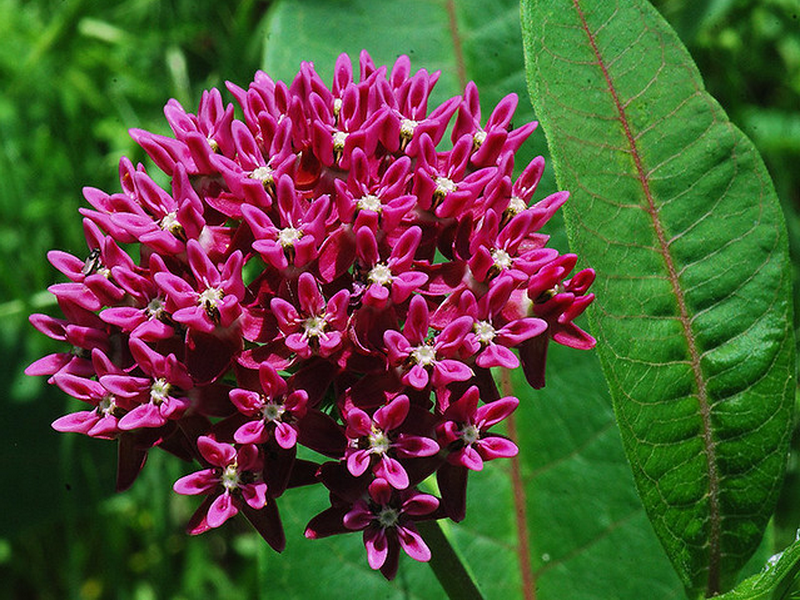Purple Milkweed
Asclepias purpurascens
Click here to download a PDF of this plant information page (for printing).

Sun Exposure: Sun, Part Sun
Season of Interest: Summer, Fall
Bloom Time: Jume - August
Bloom Color: Rose to Deep Purple
Height: 24 to 36 in.
Spread: 12 to 28 in.
Spacing: 32 in.
Water Needs: Average
Maintenance: Very little
Soil Type: Clay, Loam, Sandy, Rocky
Soil pH: Acidic, Neutral, Alkaline
Soil Drainage: Well drained, Moist
Pests: Aphids
Diseases: None
Wildlife: Bees, Buterflies

Description:
Purple milkweed is a native perennial listed as endangered in several states, and as a species of special concern in Tennessee. Though it is far distributed it rarely grows in large colonies like its common cousin Asclepias syrica. Preferred habitat includes full to part sun on sandy soils of prairies, shrub thickets, shores, and dry open woodlands. It has also been found growing in wet prairies and calcium rich sites. Research has shown it to have high nutrient requirements.
Purple milkweed has very distinctive flowers whose nectar attracts long-tongued bees, butterflies, hummingbirds, and other pollinators. There are 5 rose pink petals with hoods that are connected at the base below the anther column. The horns are down curved and purplish white. These flower parts are highly modified for insect pollination. Oppositely arranged leaves are pubescent and dark green adaxially and densely pubescent and light green abaxially. Characteristics that help to distinguish it from the common milkweed include a more prominent veins than common milkweed and flower clusters that form primarily in the upper part of the plant. Like other milkweeds, this plant produces a bitter tasting and potentially irritating white latex sap that contains toxic glycosides. For more information see:
plants.ces.ncsu.edu/plants/asclepias-purpurascens
Care and Growing Tips:
This milkweed is thought to be adaptable to a wide range of growing conditions, but this seems unlikely considering this milkweed is a rare find in the wild, let alone in native plant nurseries . Since Asclepias purpurascens does not have a long tap root to store excess nutrients, reports of drought tolerance are questionable. Our plants are planted in well-drained soil but it’s not overly dry. We mixed in composted manure before planting. Our plants receive morning and late afternoon sun but get a shady reprieve from the sizzling afternoon sun. Under these conditions we have had great success growing this milkweed in East Tennessee. However, since purple milkweed seems more difficult to establish, consider putting up a fence to keep away small critters. At mid season after the blooms have faded, cut some common stems back by about a third. This promotes fresh plant growth and could get you an extra generation of monarchs on the fresh new leaves. Leave some plants uncut if you want to harvest milkweed seeds in fall.